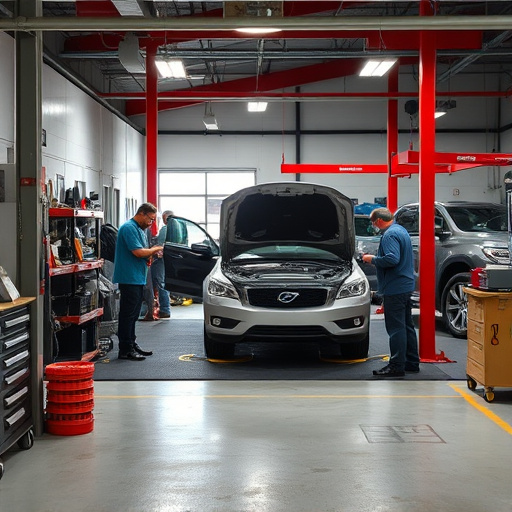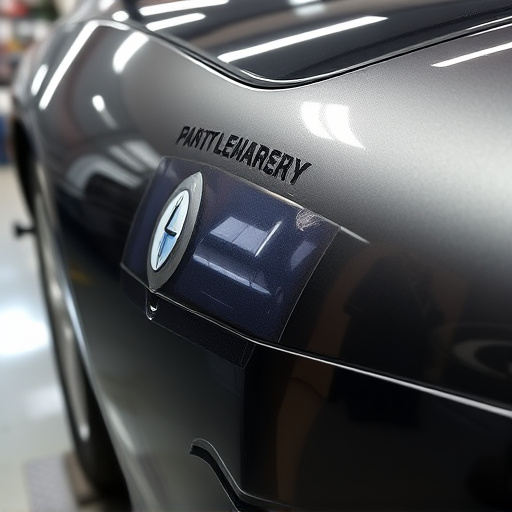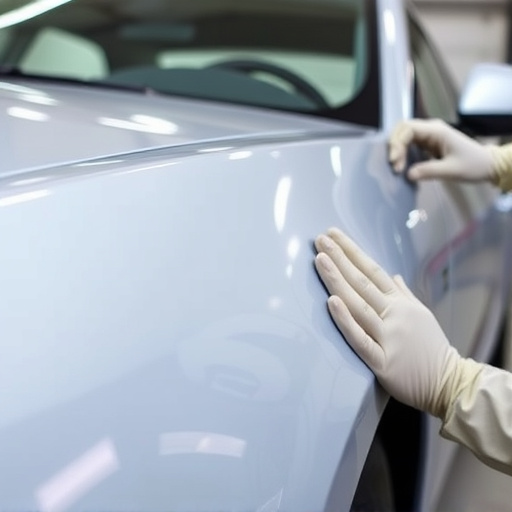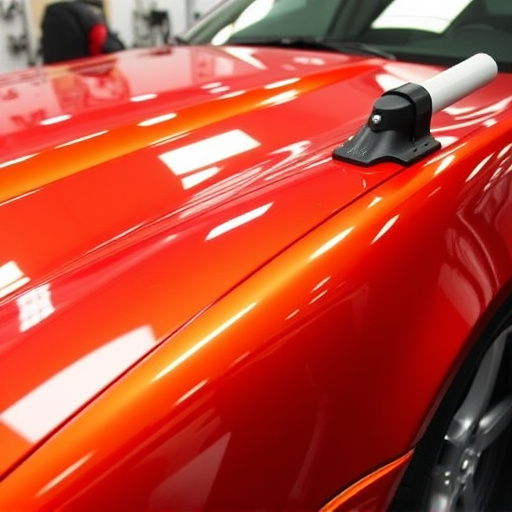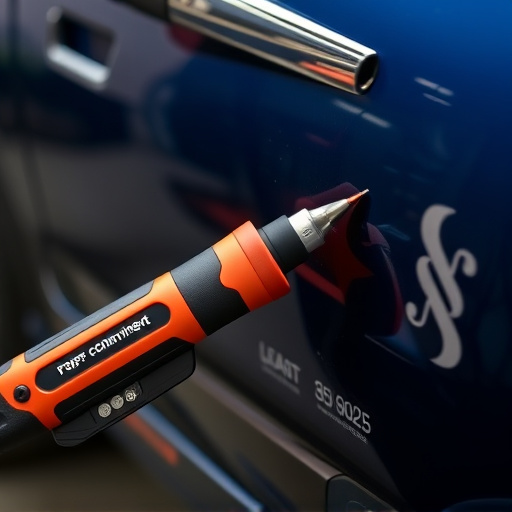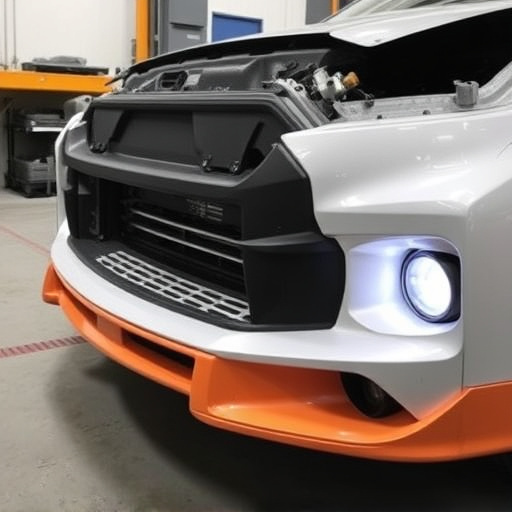Paintless Dent Repair (PDR) offers numerous benefits over traditional collision centers: saves time and money, preserves factory finish, maintains structural integrity, reduces waste, improves safety & performance, and promotes eco-friendliness. Backed by research, skilled technicians use specialized tools to remove dents without damage, restoring vehicles to pre-damage state with minimal invasiveness, high success rate, and cost-effectiveness, especially for minor dents and scratches.
“Uncover the science behind PDR (Physical Distance Reduction) and its remarkable efficiency in enhancing productivity and well-being. This article delves into the foundational concepts of PDR, exploring how it minimizes physical barriers to foster seamless collaboration. We present compelling scientific research highlighting its impact on various aspects of life. Through case studies, we demonstrate the tangible benefits realized by organizations and individuals embracing this innovative approach. Discover how PDR benefits can revolutionize work dynamics and create a more connected environment.”
- Understanding PDR: The Basics Unveiled
- Scientific Research on PDR's Impact
- Benefits Realized: Case Studies and Evidence
Understanding PDR: The Basics Unveiled

PDR, or Paintless Dent Repair, is a cutting-edge technique revolutionizing the way we address car damage. Unlike traditional auto collision centers that often require extensive vehicle body shop work, PDR focuses on restoring the original condition of a vehicle’s surface without painting or replacing panels. This method not only saves time and money but also preserves the vehicle’s original factory finish.
The science behind PDR lies in its ability to manipulate and restore the dented area using specialized tools and techniques. By gently pushing and pulling the damaged area back into place, technicians can effectively remove dents, cracks, and creases from a vehicle’s body. This non-invasive approach ensures that the structural integrity of the car remains intact, making PDR an appealing option for minor to moderate car damage repair.
Scientific Research on PDR's Impact
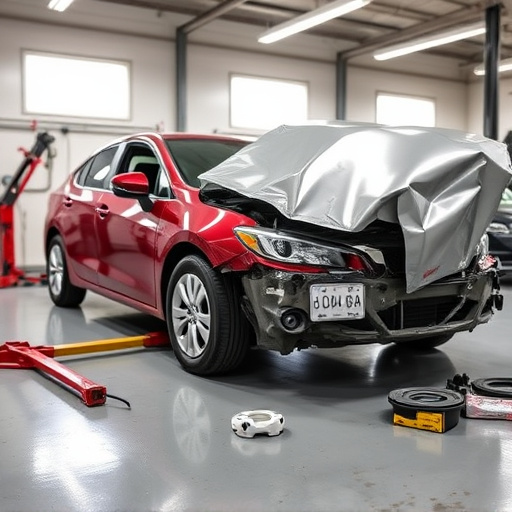
Scientific research has consistently shown that Proper Damage Restoration (PDR) techniques significantly enhance the efficiency and effectiveness of auto body repairs. By employing advanced methods and technologies, PDR benefits extend beyond mere cosmetic improvements to structural integrity restoration. Studies have revealed that meticulous PDR processes can reduce repair times by up to 40%, lowering costs for both insurance providers and policyholders without compromising quality.
Moreover, PDR prioritizes the preservation of original vehicle parts, minimizing the need for costly replacements. This eco-friendly approach not only benefits the environment but also ensures that vehicles retain their pre-incident value. Research further underscores the safety advantages of PDR, as precise repairs ensure structural integrity and enhance vehicle performance, ultimately reducing the risk of future accidents.
Benefits Realized: Case Studies and Evidence
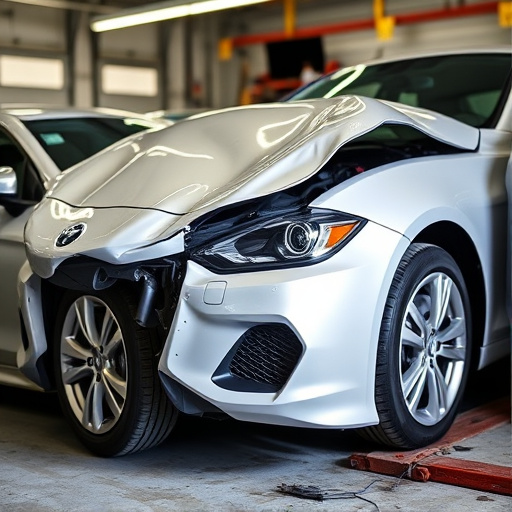
The benefits of PDR (Paintless Dent Repair) have been extensively studied and backed by compelling case studies and evidence. This innovative car paint repair technique has proven to be a game-changer in the automotive industry, offering efficient and cost-effective solutions for various car damage issues. Many professionals now prefer PDR over traditional car collision repair methods due to its minimal invasiveness and remarkable results.
Numerous case studies have demonstrated the effectiveness of PDR in restoring vehicles to their pre-damage condition. By utilizing specialized tools and techniques, skilled technicians can remove dents, scratches, and dings without affecting the original factory finish. This not only saves time and money for both customers and repair shops but also ensures that cars maintain their resale value and aesthetic appeal. The success rate of PDR is well-documented, making it a preferred choice for those seeking quick and reliable car repair services, especially for minor dents and scratches resulting from parking lot mishaps or road hazards.
In light of the above discussions, it’s evident that PDR (Physical Distortion Reduction) techniques offer a multitude of benefits, backed by robust scientific research. Understanding the basics and exploring case studies highlights their significant impact on various aspects, from enhancing physical well-being to improving overall quality of life. By integrating these practices into daily routines, individuals can harness the power of PDR benefits, leading to a healthier and more balanced lifestyle.



